Olga Mykhoparkina
Founder, CEO

Olga Mykhoparkina
Dec 18, 2023We’ve been in SaaS marketing for over seven years and we tried different strategies until we found the one that brings the most leads.
Our client list includes big SaaS companies such as Monday.com, PandaDoc, Expandi, GetVoip and many others, but we also work with new SaaS brands that want to leverage their saas content marketing blogs.
When we create content for our clients, our goal is not only to boost their website traffic but to get more people to actually buy their product. We help them do that through a high-intent content strategy that I’m about to share with you.
You can have the similar results we’ve had for our content marketing agency’s clients if you follow the step-by-step SaaS content marketing strategy you’ll learn in this article.
Table of Contents
Here’s the step-by-step process we use when creating a content marketing strategy for our clients.
1. Market analysis and identifying buyer persona
Whether you’re a new or an established SaaS company, I’d recommend starting with market research.
Identify your main competitors and then do a detailed analysis of their content. Observing the articles that are ranking high on Google can help you come up with some content ideas.
Take note of things they’re doing well, but also try to spot topics that they haven’t covered that well. You could use that as a competitive advantage when creating your own content strategy.
Before you begin creating product-led content, you should identify your buyer persona. Content creation gets much easier when you know who your ideal customer is and what they’re looking for.
Here are some questions to help you out with your saas content marketing:
2. Performing keyword research
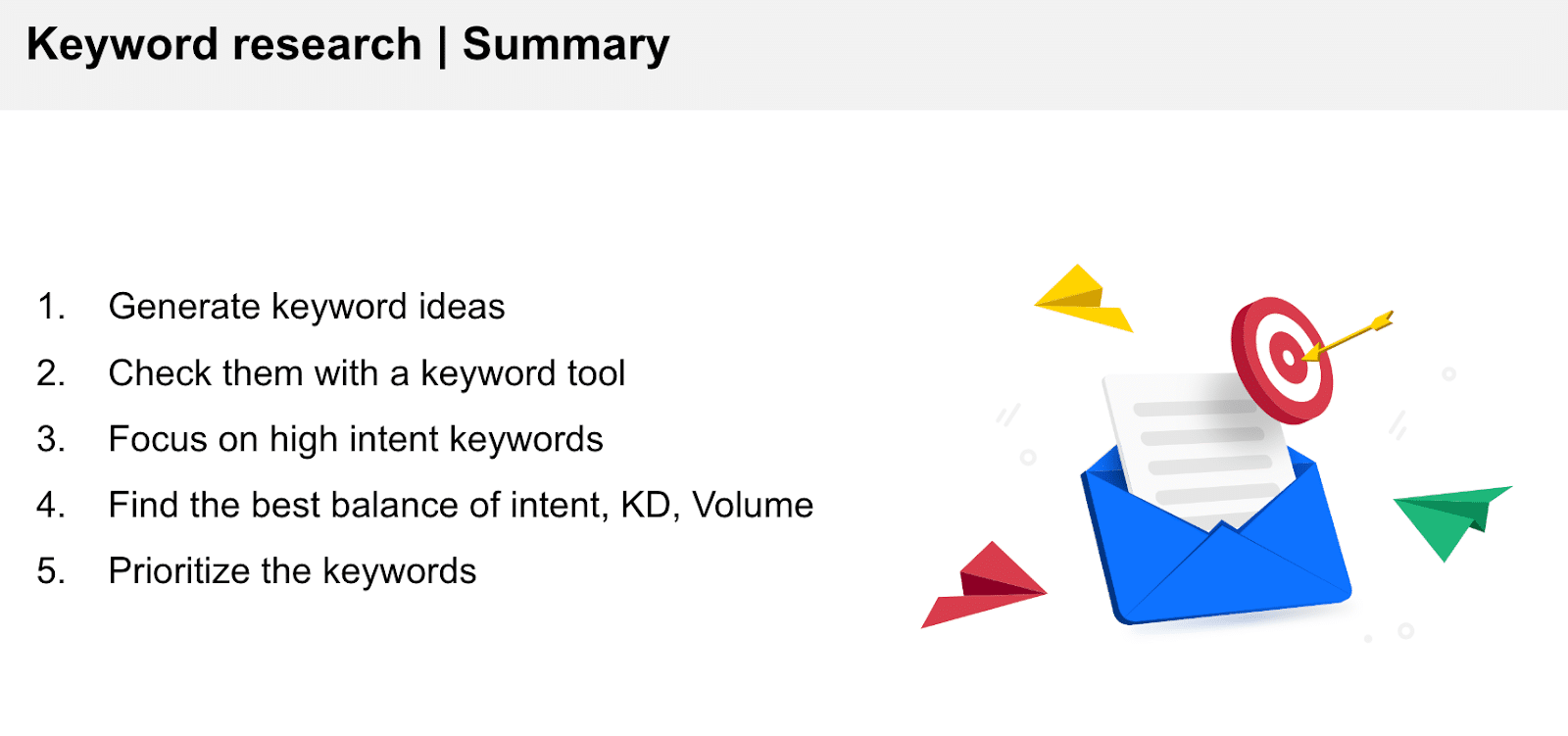
Before you hire a saas SEO copywriter or start writing your blog posts, it’s essential to do keyword research and find relevant keywords you can base your content around.
You can use SEO tools like Ahrefs and SemRush. The first step is to check whether there is a search demand for a solution like yours. Are people searching for that type of SaaS on Google? And what keywords are they using?
You can check related keywords to get some inspiration when choosing the right words.
3. Prioritizing keywords to cover in blog posts
Here’s a formula we use at Quoleady. The goal is to find the balance between these three things:

You should find keywords with a reasonable search volume, but there’s no need to chase keywords with the biggest search volume. They’re probably already covered by your competitors and it’d take you tons of money to outperform them.
Let me illustrate this with an example. If you were a new email marketing software, it’d be pretty unrealistic to rank for the keyword “email marketing tool”, because big players such as Mailchimp, Omnisend and others, have already covered those popular keywords.
That’s why I’d suggest looking for alternative keywords with a solid search volume, but lower keyword difficulty, that are less competitive.
Among all these things, I’d focus most on search intent.
By focusing on high-intent keywords, you’re targeting people that are most likely ready to buy. They’re at the end of the marketing funnel and they show high purchasing intent.
Here’s a practical example of what it looks like to find the balance but prioritize search intent:
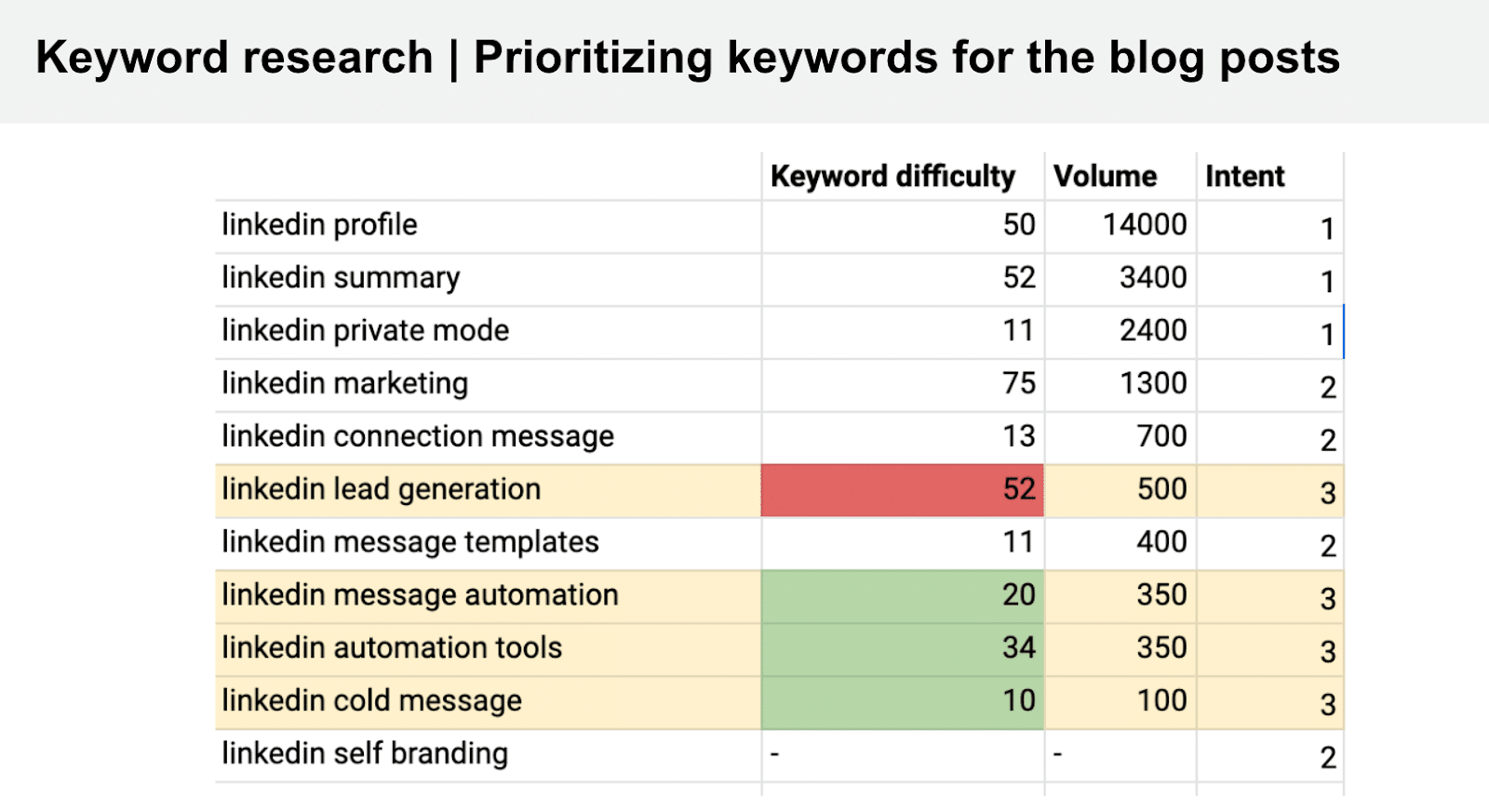
4. Coming up with the winning titles
Over the years of working in the SaaS industry, I realized most titles are pretty much the same, especially when it comes to listicles.
You can check it yourself. Just go on Google, type your keyword and see what comes up. You’ll probably see something like X Top %Tool% alternatives you’ll love/ need to check/ that work.
That’s your chance to shine and use your creativity to create eye-catching titles that will drive organic traffic to your website.
Don’t forget to use your main keyword in the title. It’d be ideal if you could put it at the beginning of the title!
You can use CoSchedule Headline Analyzer to see whether you can improve your title. CoSchedule can assess whether your title is clear and skimmable, whether it should have more or fewer words and it’ll give you many suggestions to improve the title, as you can see in the picture below.
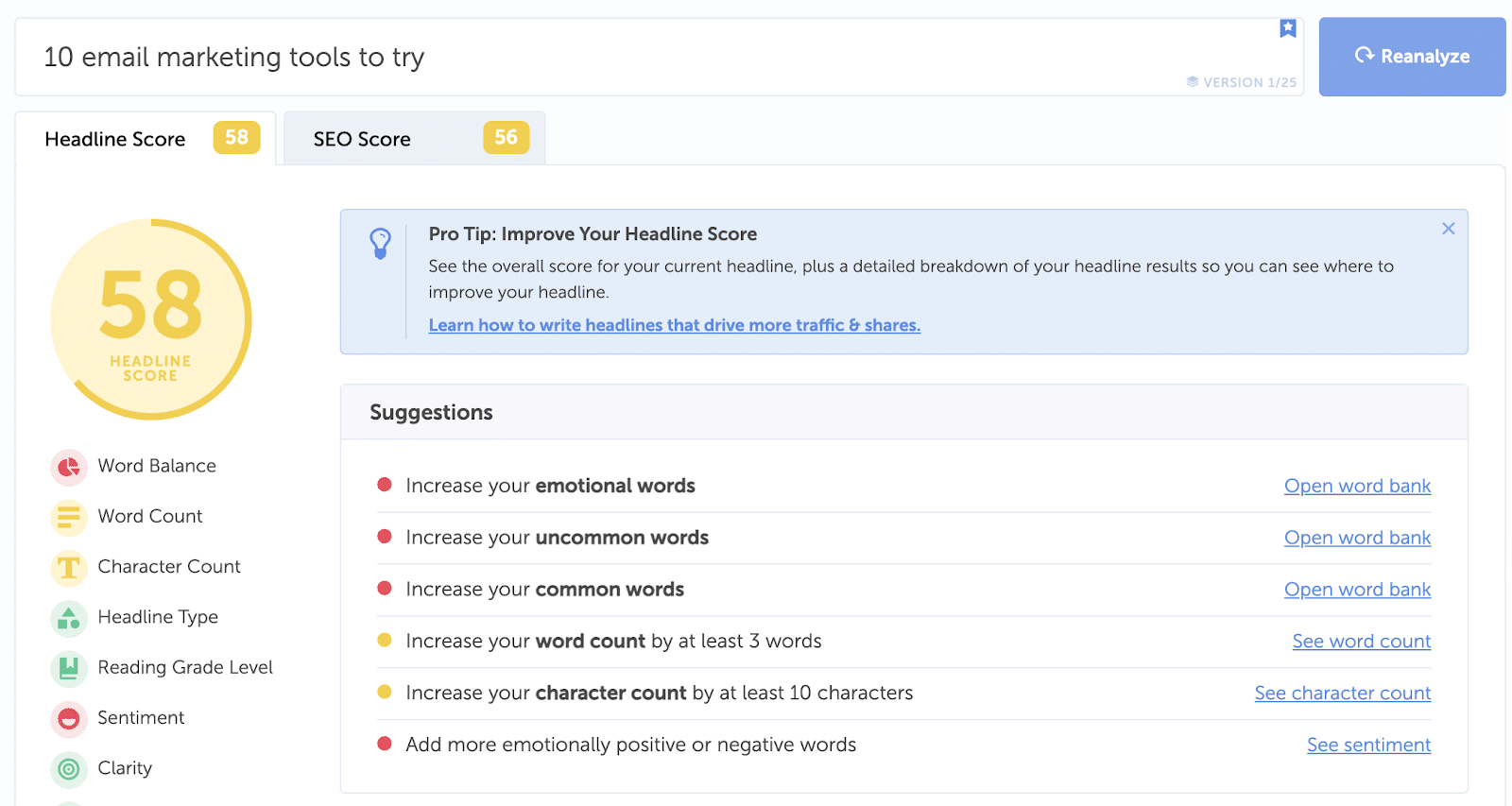
If you notice that you’re getting fewer website visitors over time, it can be a good idea to change the title and see if CTR is going to change. Experiment with changing titles every once in a while until you find the one that converts the best.
Here’s a quick tip: adding the month and the year can instantly increase your CTR because people want to read fresh news and insights.
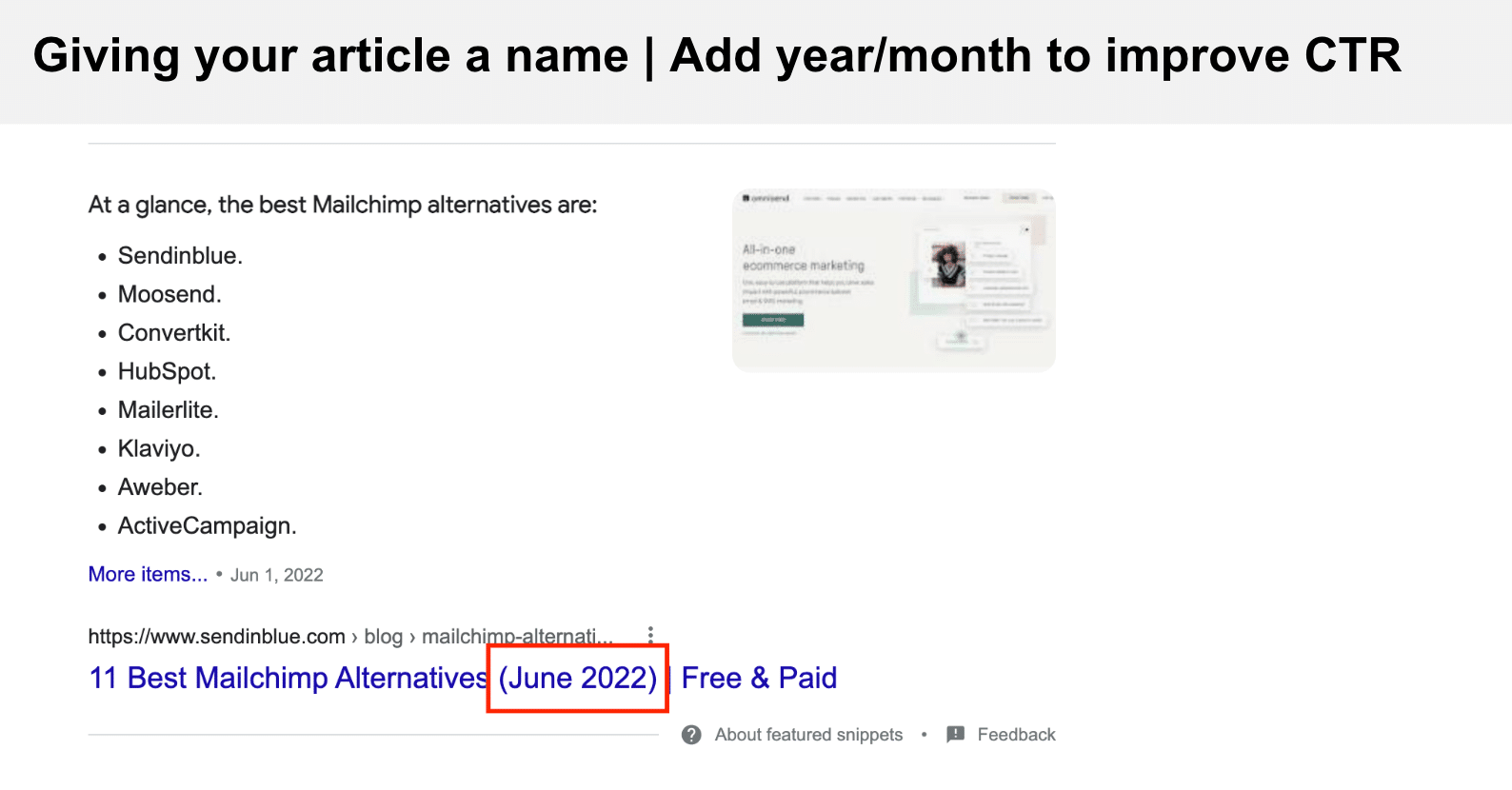
5. Producing quality content regularly
Your SaaS content strategy should be a marathon, not a sprint. We’re looking for long-term results here.
You can’t publish a few high-quality blog posts and expect overnight results. Consistency is key and the good news is that Google favors websites that consistently post new content.
The competition in the SaaS industry is enormous and some of our well-established clients are posting 30-60 blog posts per month!
I’m not saying that you should focus on quantity over quality. Only quality content can help you rank on search engines and get leads.
Take your time to do thorough research and create content that adds value to your readers. You should strive to write in-depth articles that are more detailed than your competitors’ blog posts.
Write in a way that’s easy to understand and filled with actionable advice that can be applied instantly. Use everyday language and keep your sentences short and simple.
Divide your content into bite-sized paragraphs and add plenty of subtitles to make it easier for a reader to skim the article and find the information they’re looking for.
We shared plenty of tips for SaaS content writing in this article.
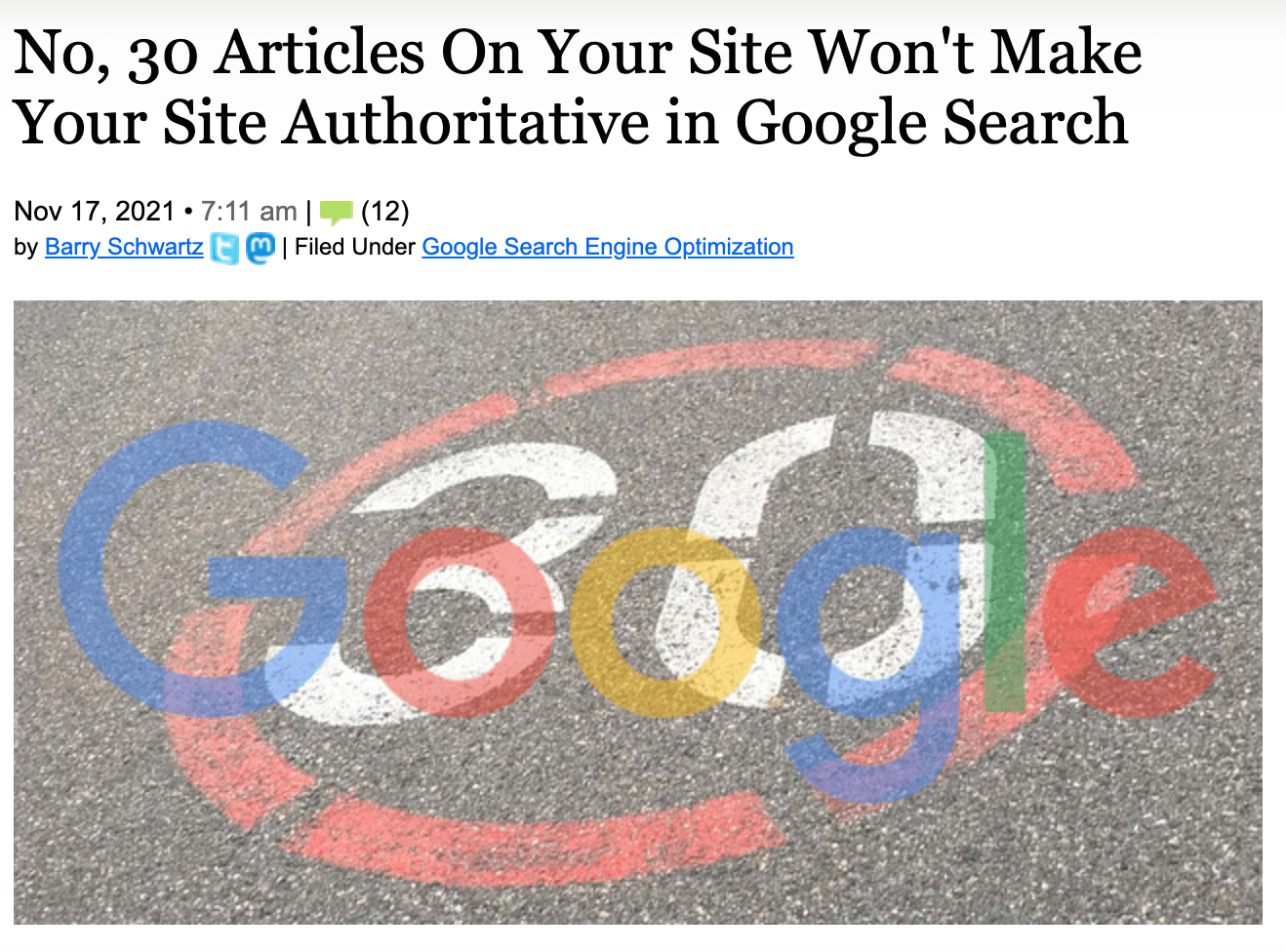
Create a content calendar to help you plan your content and stay on track.
6. Optimizing your SaaS content for SEO (keywords,page speed and URLs)
When you create SaaS content the goal should be to find the balance between giving value to your readers and optimizing your article for search engines.
I’ve already talked about keyword research, but there are more things to do to make sure your content is optimized for Google.
Here are a few quick SEO tips:
Links are also an important part of search engine optimization, and I’ll go into more detail about them below.
Read this article if you want to learn more about SEO for a SaaS blog.
7. Optimizing your SaaS content for conversion with CTAs
One mistake I often see is people giving a lot of value through their content, but forgetting that they’re here to sell.
People are much more likely to sign up or buy your SaaS product if you tell them exactly what you want them to do. That’s in our nature. We need reminders all the time.
Therefore, don’t forget to add CTAs through the article and encourage potential customers to sign up in the text.
I recommend placing a few CTAs throughout the content piece because the attention span is getting shorter and shorter and most people need to see it multiple times.
If you want to make sure your CTAs stand out, check out what we did for our client Expandi. Instead of using plain textual CTAs, we added eye-catching banners throughout the text.

8. Working on content upgrades with different content formats
You have to constantly produce content for people in different stages of the marketing funnel to get their attention and turn them into paying customers.
In this article, I focused a lot on high-intent and BOFU content writing because it brings quick results, but it doesn’t mean you should ignore top and mid-funnel content.
When it comes to TOFU content, your main goal should be to capture the email of your website visitors so that you can continue with lead nurturing.
People will give you their email address only if they perceive they can get something valuable in return, something that they can’t easily find on other websites. That’s why it’s important to create in-depth content and make sure it’s up-to-date with the latest industry news.
Here are some content formats that you can use as a lead magnet:
Sometimes you don’t have to start from scratch. Go through your old content and see whether there’s something you can repurpose. For example, if you had a series of blog posts around one topic cluster, you can turn them into an ebook on that topic and use it as a lead magnet.
9. Setting up the lead nurturing process for your target audience
Sometimes a potential customer needs more time and information before they make a final decision, especially in the B2B world, where there are multiple decision-makers.
That’s why you need to set the whole nurturing process.
First, go to Google Ads Manager to enable retargeting people who already visited your website.
Second, create lead magnets to get people to give you their email/sign up for your newsletter.
Once you have their emails, you should nurture them by providing with valuable content on a regular basis. ou can send them special offers.
Speaking about email marketing strategy, the word to remember is – consistency. Make sure to deliver what you’ve promised.
If you said that you’ll send two newsletters every month, then stick to that schedule, and your efforts will pay off over time.
If you want to boost your lead generation and nurturing efforts, make sure that you track all important saas marketing metrics: open rate, click-through rate, conversion rate, channels that bring you the most leads, etc. That’s the only way to see what works, optimize your content production for saas and speed up the customer journey.
10. Adding internal links wisely into each article
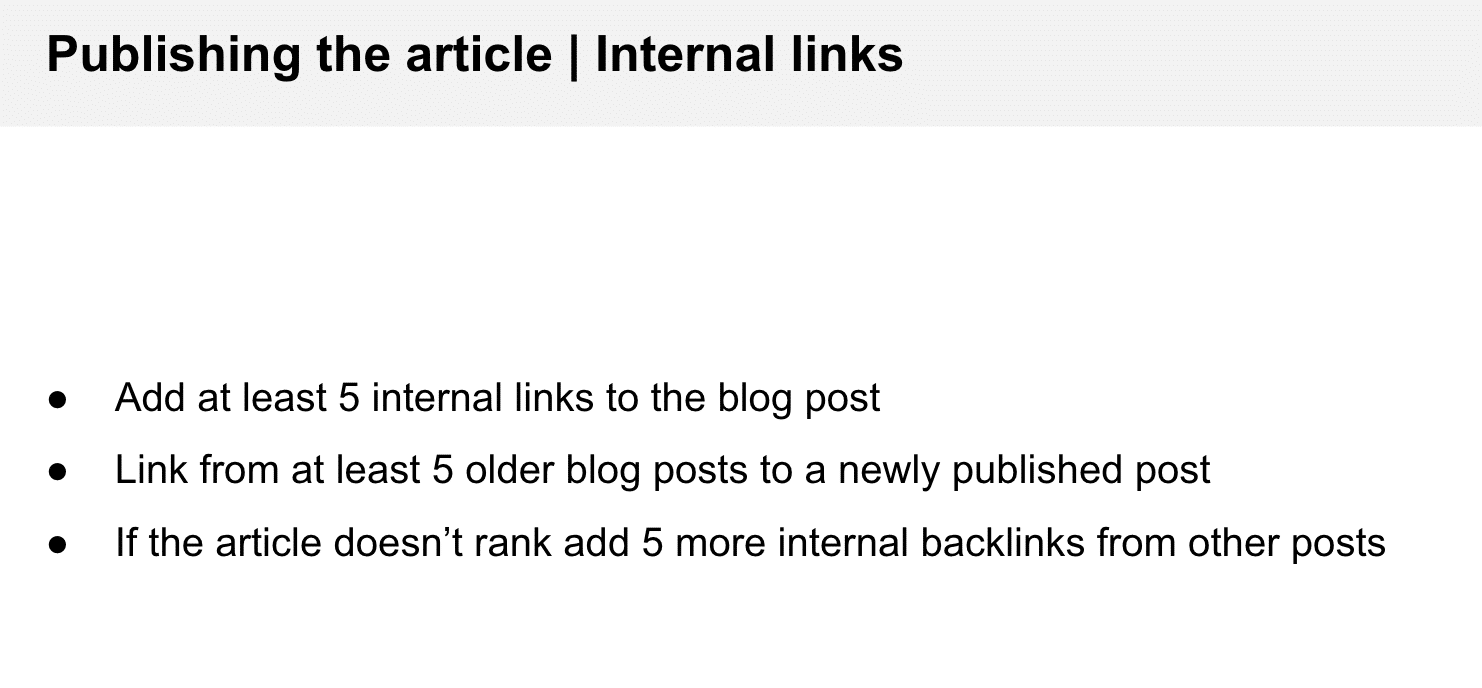
While most content marketers are talking about external links, you shouldn’t underestimate the power of internal links as well.
Do you want a quick hack on how to boost organic traffic to your latest blog posts?
Go through your older blog posts (those that are performing well and have a solid number of backlinks) and add a link that leads to your latest blog post.
But, be careful when choosing articles for internal linking and avoid thin content.
If you’re not sure where to start or have limited resources, I’d prioritize linking to articles that need a ranking boost.
On the other side, when choosing the old articles to link from, choose the articles that already rank high in organic search and have a lot of backlinks.
What’s the ideal number of internal links? It depends on the length of your article! We experimented with different amounts of internal links, and we discovered that using 15+ internal links gave much better results compared to 5-10 links we used in the past (of course, I’m not talking about short articles, most of our articles are 2000-3000 words long).
Make sure that you’re keeping it relevant by linking to articles that are connected to the topic and are providing additional value to the reader. Avoid internal link stuffing, linking just for the sake of linking.
11. Updating old content every 2-3 months
With time, your content may lose some of its ranking on Google. But the good news is that you can keep your ranking if you make sure that your content is always up-to-date.
That’s something we do for our clients on a regular basis, every few months. Here’s what I would do:
Here’s one thing you can do today. Go through your old blog posts and update the year in the title and the text, from 2023 to 2024. This simple action can improve your CTR, because people tend to click more on articles that seem relevant and fresh.
12. Building relevant external links
Backlinks are one of the top ranking factors. All SaaS content marketers agree that when it comes to a competitive niche, it’s hard to rank even the best content unless it has high-quality backlinks.
Now that you know this, it can be tempting to buy backlinks or get them from content farms and random portals. You’ve probably gotten an email like that a few times:
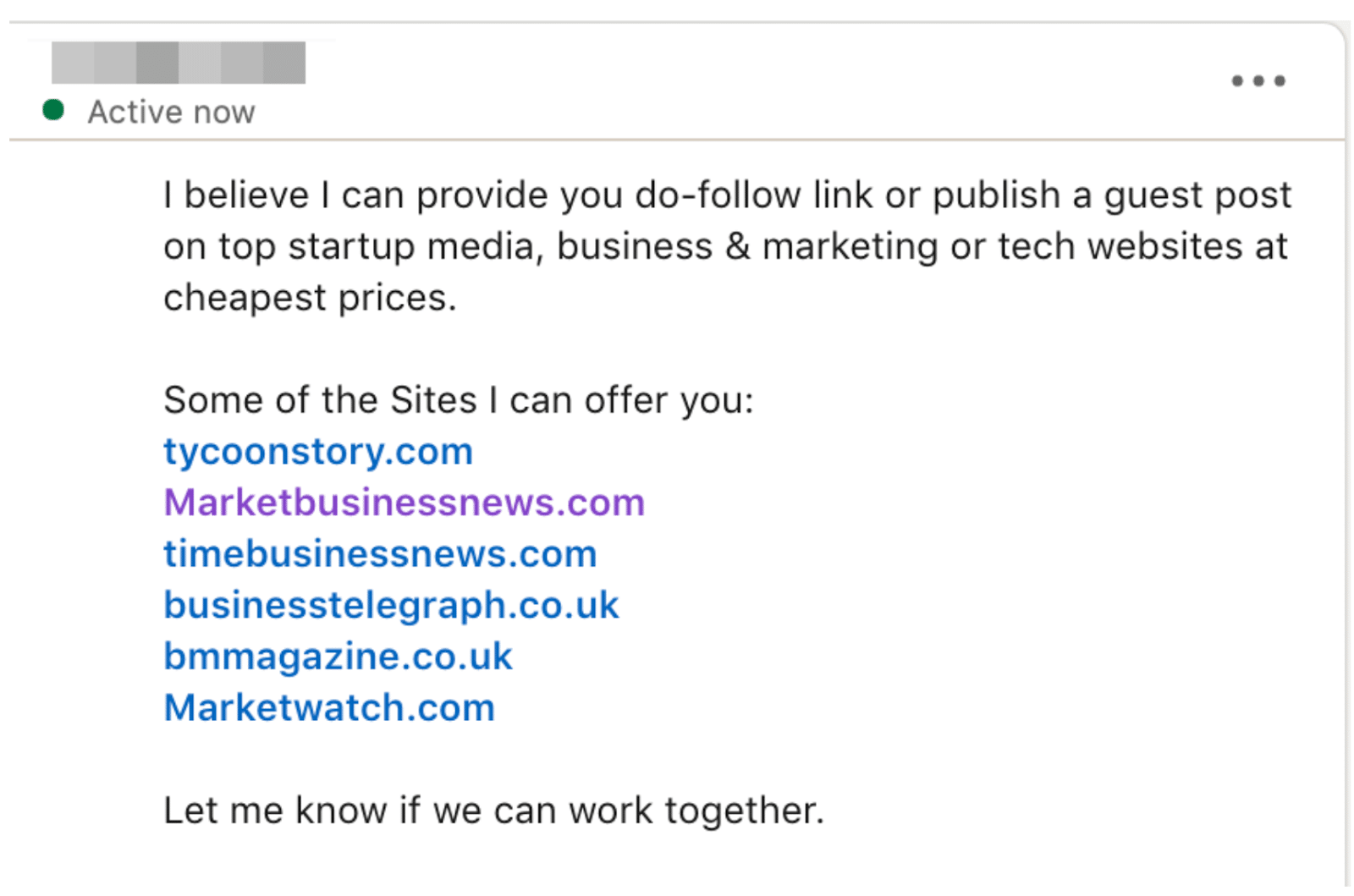
But don’t do that.
My advice is to pick quality over quantity when it comes to external links as part of your saas content marketing efforts.
Here’s how to build high-quality external links without spending tons of money:
1. Guest blogging
Guest blogging is basically writing content for another blog or platform and sharing your expertise.
Link building is not the only benefit of this tactic. It also allows you to expose your SaaS brand to a new audience, position yourself as an industry leader and build relationships with people in your industry.
I can personally recommend this strategy because I was invited to write articles for many platforms as a guest contributor. You can check some of them out because they can be useful:
You can reach out to other platforms and offer to write articles for them, but make sure to choose a platform that is relevant to your industry and has consistent traffic.
2. HARO
Help a Reporter Out (HARO) is a platform that connects journalists with sources.
Every day hundreds of journalists are looking for information and industry insights from relevant sources to back up their articles with. If they choose you as a source, you’ll get a backlink when the article is published.
You can sign up for the HARO newsletter, select the industries you want to follow, and you’ll get emails every day with requests from journalists related to your industry.
How to make sure that the journalist picks you as a source?
We’ve been able to achieve some great placements for our clients including platforms like Forbes, Entrepreneur, Yahoo, Business Insider and many more. It doesn’t happen every day but it can definitely work.
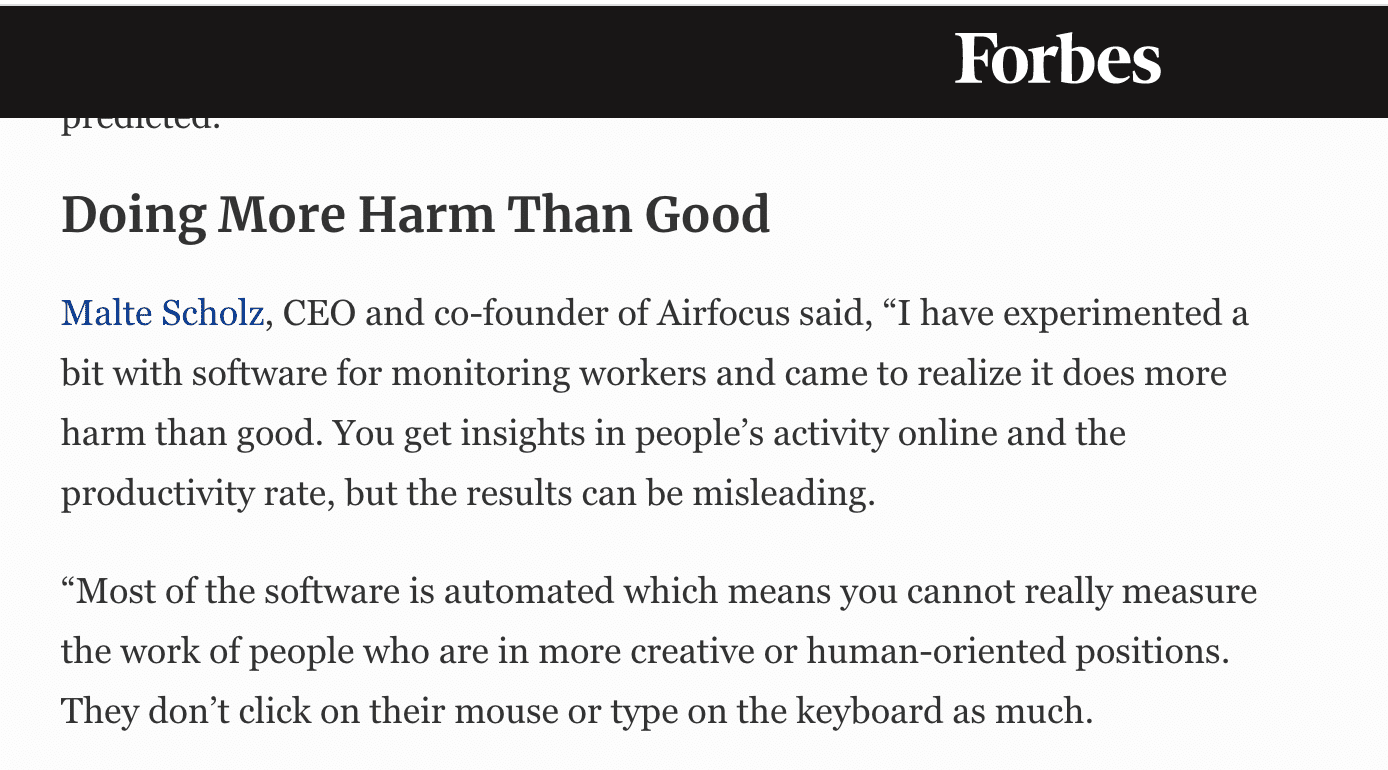
3. Statistics posts
The reason why saas content marketers add lot of statistics articles online is because they work and people love reading them!
Creating an in-depth statistical piece of content may be time-consuming but it’ll pay off once other people start linking to you as a source and it’ll happen because everyone needs to back up their articles.
Try to use your own statistics wherever you can. Of course, you can also add other stats but make sure to link to the original source.
4. A-B-C exchanges
Direct link swapping is an outdated strategy and it won’t help you much, because Google recognizes websites that link to each other.
However… 3-way link exchange is more complex and harder to detect.
Basically, you need 3 websites with high DA and similar niches.
Site 1 links to Site 2, Site 2 links to Site 3 and Site 3 links to site 1.
Everyone is getting backlinks and there are no reciprocal links, that are considered low-quality links.
5. Link gap analysis
You can use SEO tools to discover websites that are linking to your competitors but aren’t linking to your website. Send them an outreach email and propose a collaboration.
If they’re linking to multiple websites in your industry, chances are they’ll accept your offer as well. But remember that it’s a numbers game and don’t get discouraged if you don’t get the answer you want. Keep going.
If you want more info, read this guide to find out how to choose websites for SaaS link building and avoid scammers.
13. Distributing SaaS content on every channel
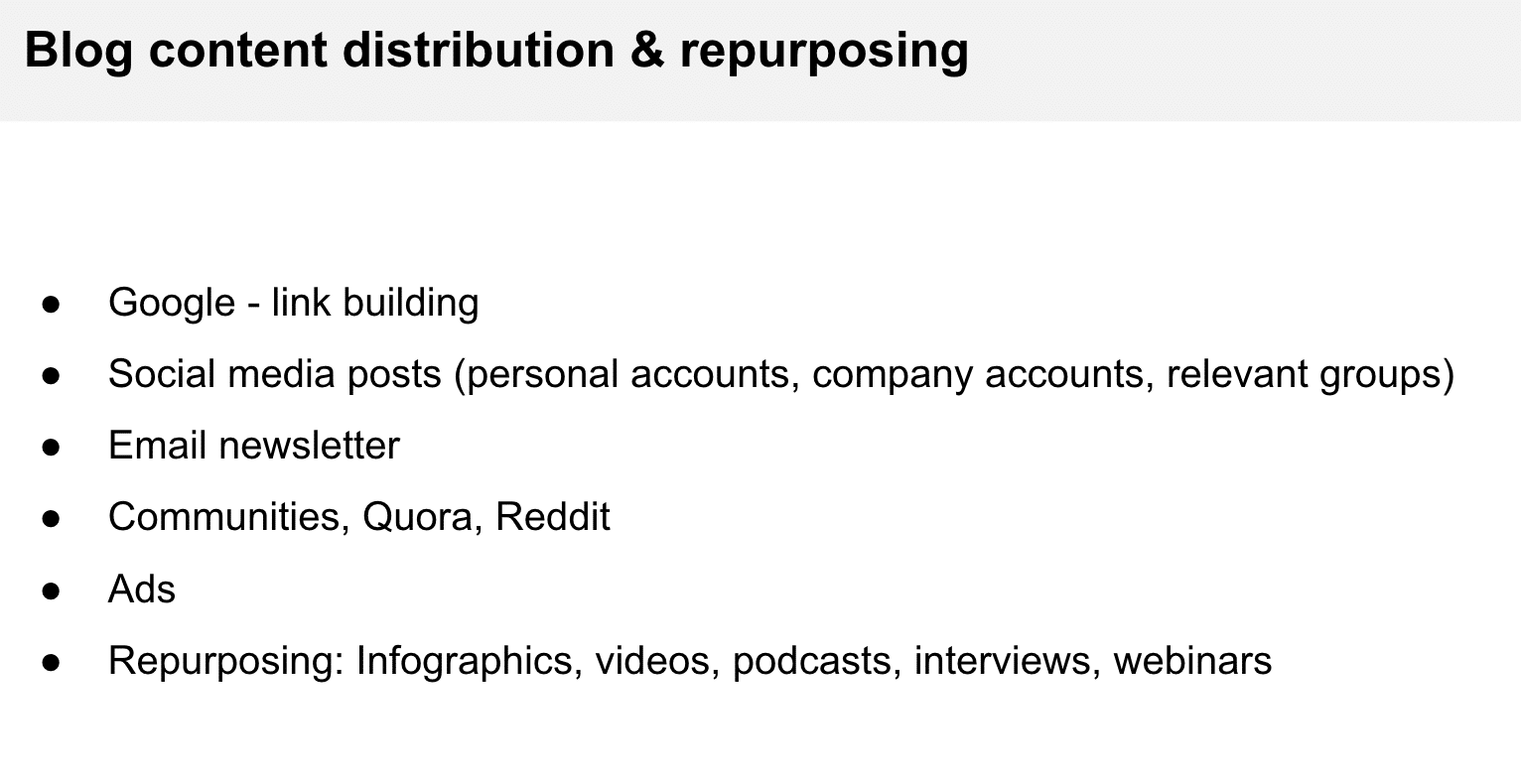
When it comes to a content distribution strategy, I’d focus my marketing efforts on your blog and Google.
Let me explain why I think Google is the best marketing channel for SaaS companies. If you write an optimized article that ranks on Google, it can bring you evergreen traffic for months and even years, if you update it regularly.
On the other hand, other channels like social media or paid ads can get you only a one-time spike, without lasting results.
With Google, you can get organic traffic and marketing qualified leads almost for free. That’s why I believe quality content and search engine optimization have the biggest ROI compared to other strategies.
Of course, you can use other marketing channels as part of your content distribution strategy, especially if your target audience is there. For B2B products, I’d focus on Linkedin, Quora and other online communities where people are looking for industry-related information.
But if you want long-term results, I’d advise you to direct your marketing efforts toward creating high-quality content for people who search it on Google.
Here are content marketing the tools our saas content marketers use on a daily basis:
We helped multiple SaaS companies achieve amazing results through our high-intent strategy.
1. FullSession – from 0 to over 40.000 visits
FullSession is a behavioral analytics software with whom we started working in 2021. When they reached out to us, their website was brand new, with zero backlinks and DA 2.

Here’s what we did:
Here are some of the results after only a few months:
You can read the full case study here.
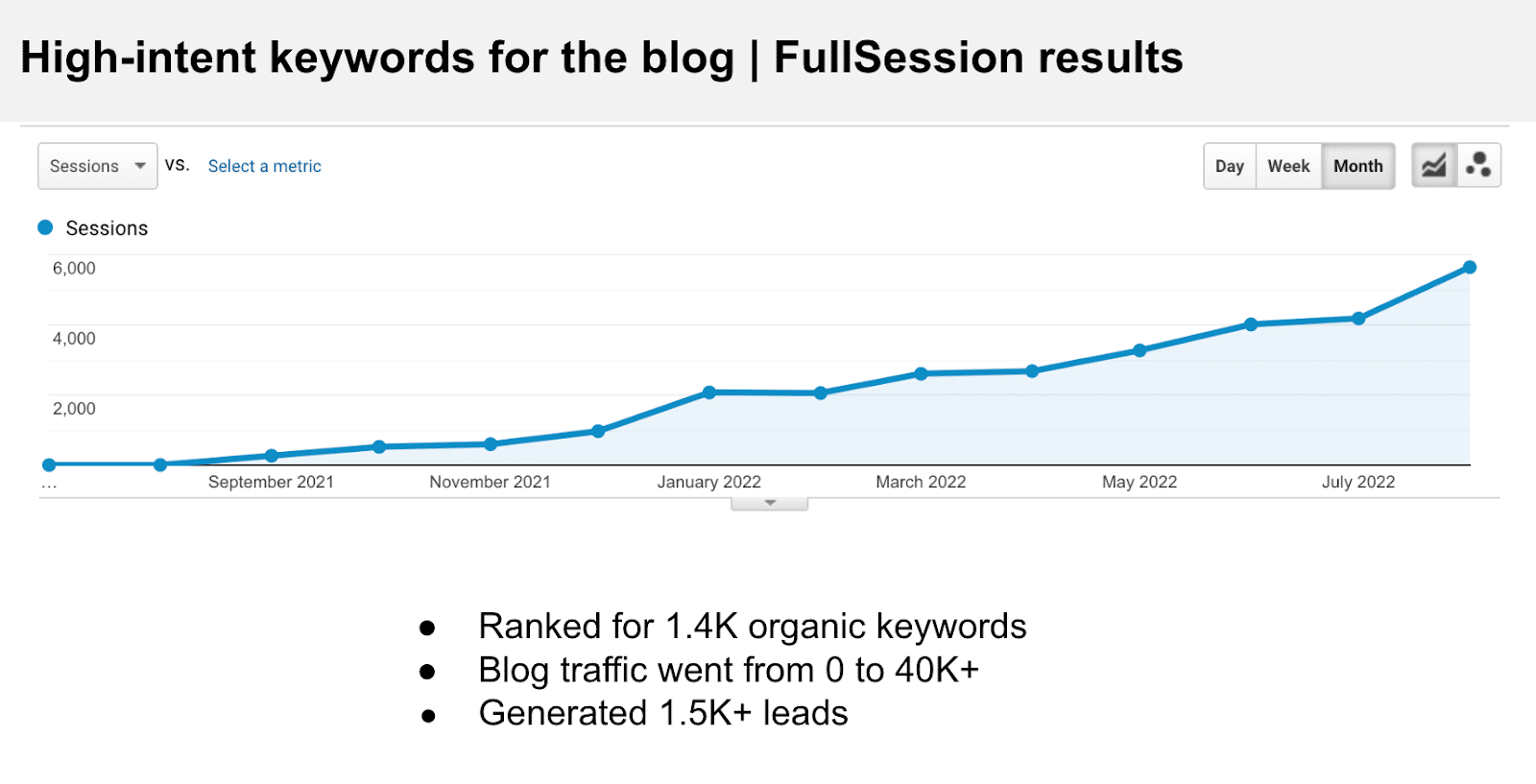
2. RingBlaze – 650 new leads
RingBlaze is a virtual phone system. When we started working with them, they already had a blog, but it didn’t bring them any traffic or leads. We had to reinvent their content marketing strategy from scratch.
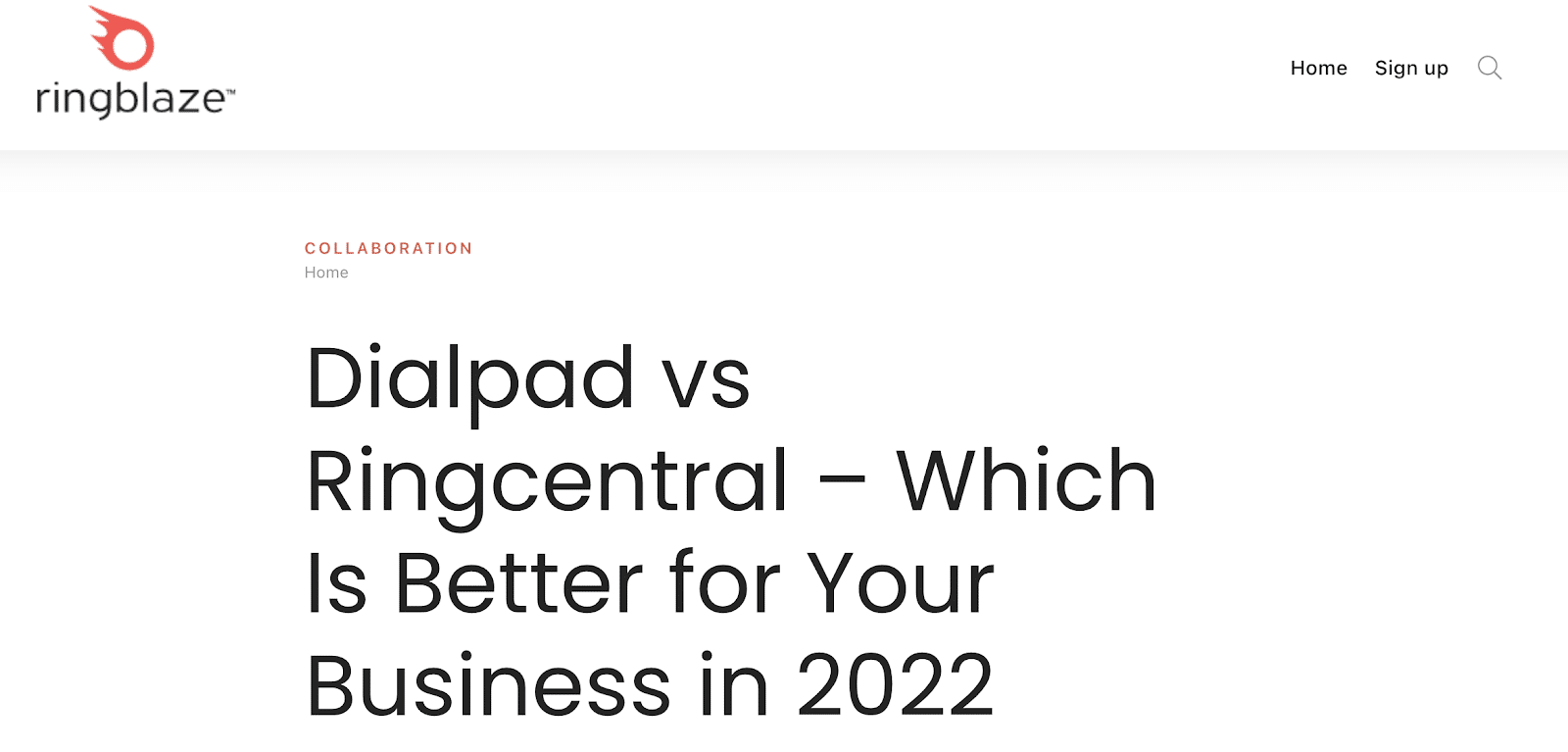
Here’s what we did:
Here are some of the results after only a few months:
You can read the full case study here.
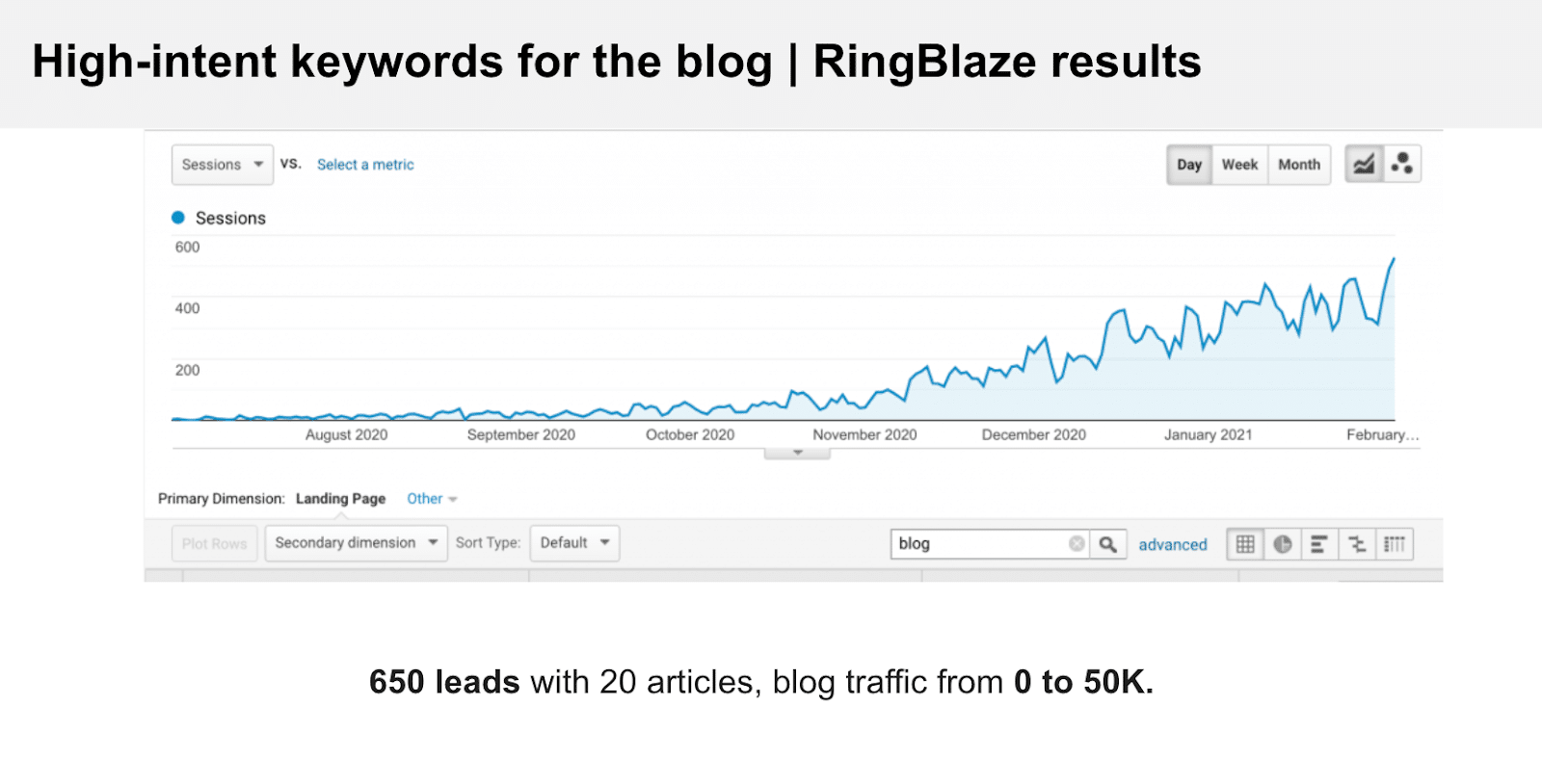
According to the Content Marketing Institute, content marketing has a higher ROI than other types of marketing, such as traditional advertising.
SaaS content production not only costs you less than paid promotions, but it can also have a long-lasting effect that can bring you new leads for months and years after you’ve published your content.
This is especially important for small and medium SaaS companies that have a limited marketing budget and want to get the most out of it.
Thousands of people are googling SaaS-related questions every day. They’re looking for solutions to their problems and comparing different SaaS brands online.
If you find out their pain points and help them solve them through your content, you can position your SaaS brand as the logical solution for them. And that’s the whole point of B2B SaaS content marketing.
It helps you to reach your target audience through helpful content and move them down your sales funnel until they become your clients.
Here are some of the things you can get through content marketing:
A SaaS content marketing strategy is a long-term plan of creating and distributing content with the aim to attract your target audience, educate and engage them and convert them into paying customers.
A SaaS content marketing strategy is a part of a broader inbound marketing approach that’s all about naturally drawing customer interest toward your company, instead of pushing them with paid content promotion.
Here are four aspects to consider when creating your overall content marketing strategy:
1. Your target audience
The first step is to learn more about your target audience and their pain points so that you can create your buyer persona.
Think about your ideal clients. What’s bothering them? What are their goals? What problems can your SaaS product solve them?
If you’re in a B2B SaaS business, you also need to identify who are the decision-makers in the company and who are the end users of your product. What’s their job title? What’s motivating them?
2. Your goals
Next, define your long-term and short-term goals. Do you want to increase sales? Or, is your SaaS business brand new and you want to first increase brand awareness?
You can also have multiple goals, depending on where your clients are in their customer journey.
Without clear goals, you can’t track your content marketing efforts and see what works.
3. Keyword research
I believe that optimized content for Google is the best and quickest way to reach your target audience and that’s why keyword research must be part of your content strategy.
The first step is to find out the keywords your potential customers are searching for in Google, and only when you have found them, it’s time to create content around those keywords.
4. Your competitors
Analyze other SaaS businesses in your industry and their content. Having competitors isn’t bad because it means there’s demand for a product like yours and you can also learn a lot from them.
Type your main keyword on Google and check out the blog posts that appear first in organic search.
What is good about their SaaS content and what could be improved? Are there any angles that they haven’t covered and that you can use to position your blog posts higher on Google?
Content analysis can help you come up with your competitive advantage.
Here are four things that could determine your success:
Being customer-centric. There’s no one-size-fits-all approach. The success of your content marketing strategy depends on how well you get to know your customers and how well you can deliver what they’re looking for.
Finding the balance between people and SEO. Your blog should be a central part of your SaaS content marketing strategy and you should strive to create content people find interesting and useful, but also make sure to optimize it for Google.
Setting SMART goals. The best way to measure your content marketing success is to set SMART goals. Your goals have to be specific, measurable, achievable, relevant and time-bound.
Putting it into action. Finally, even the best strategy won’t work unless you don’t put in the work. Start to create content and be consistent. You may not see results overnight but stick to it. Your content marketing efforts will pay off and have a compound effect over time.
There are a number of other things that contribute to the overall success of the SaaS content marketing strategy. Devil is in the details and if you want to know more content tips and hacks, keep reading our blog.

When talking to SaaS company owners, I often hear that they want to rank for a “big fat” keyword in their industry, keywords with the highest search volume. But what they don’t realize is that it would take them years and a lot of money to get there.
Let me illustrate this. If your SaaS company has recruitment software, the first instinct would be to try to rank on Google for “recruitment software”. But let’s take a closer look at that keyword.

You’ll see that it’s “super hard” to rank for, the websites already ranking for it have a high DA and the amount of backlinks they’ve acquired over time is enormous. It’d take you 329 backlinks just to get in the top 10 search results! That’s insane.

Based on the competition, you’d have to grow your domain authority to 80 (which can take years) and get at least 100 backlinks to a blog post (which can cost thousands of dollars).
And the worst part is that even that won’t guarantee that you’ll be among the first search results. Why? Because your competition is not sleeping, they’re working on improving their content and getting new backlinks every day.
See why you shouldn’t focus your marketing efforts on chasing those big popular keywords? It’s just too much effort and sometimes you simply can’t win.
What to do instead? Don’t worry, we’ve got you covered.
I suggest focusing on strategies that will bring you the biggest ROI.
We experimented with different content strategies and found that high-intent SaaS content strategy can bring you the most leads at the lowest budget, and also pretty quickly, allowing you to skip the whole lead nurturing process.
The goal is to target people that are already at the bottom of the sales funnel and that have shown high-purchasing intent.

Here are some high-intent content ideas for creating bottom funnel content:
1. Alternatives
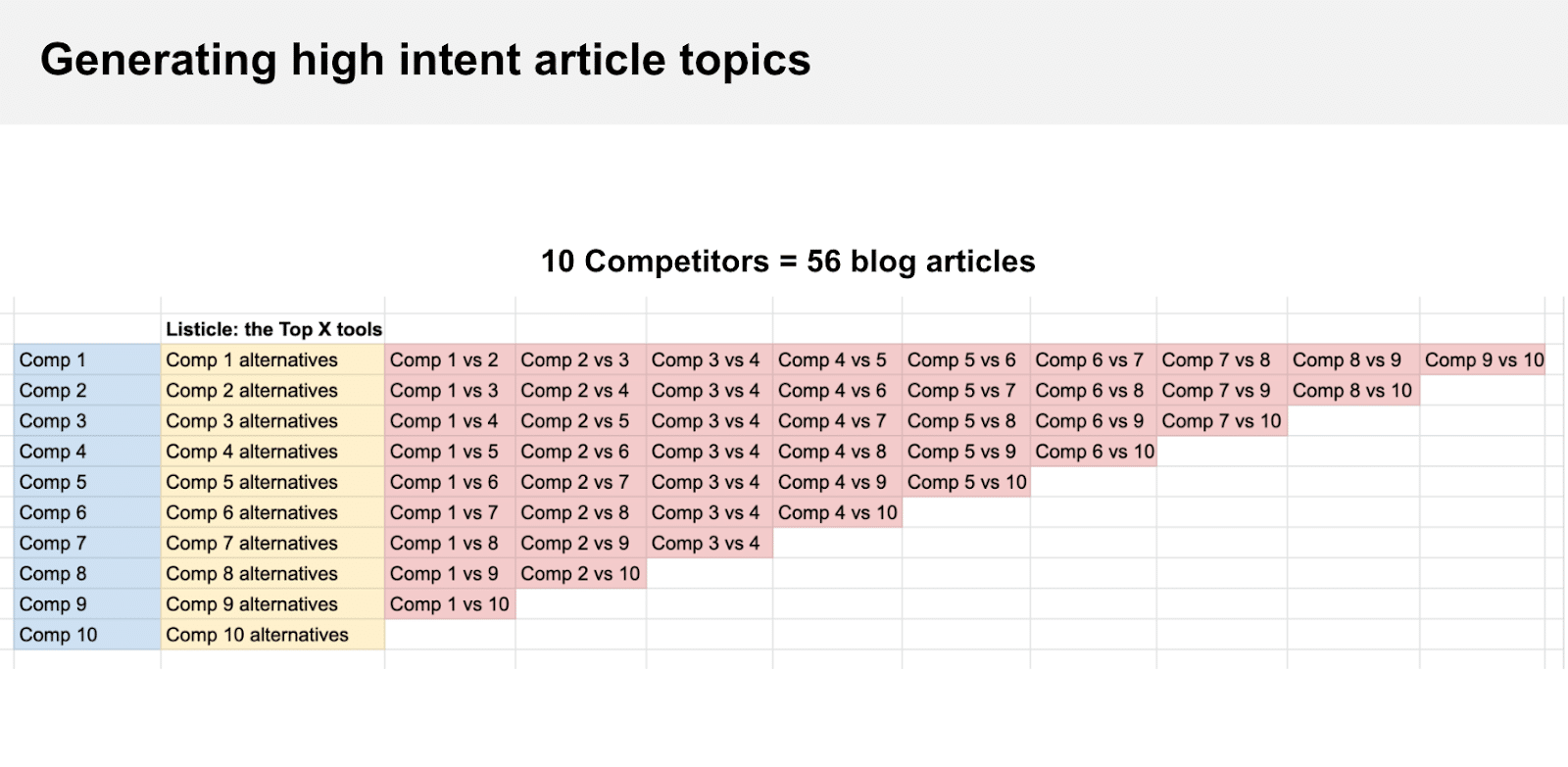
If you’re a brand new SaaS company and nobody is searching for your brand on Google, don’t worry. Here’s what you can do instead.
Identify your main competitors, top SaaS businesses in your niche, and use a keyword research tool to find out how many people are looking for their alternatives.
Those people could be your ideal clients. They’re probably not satisfied with the software they currently have, and they’re looking for other options, which allows you to position your product as a logical solution.
If you’re in email marketing industry, your keywords could look like this:
2. Comparisons
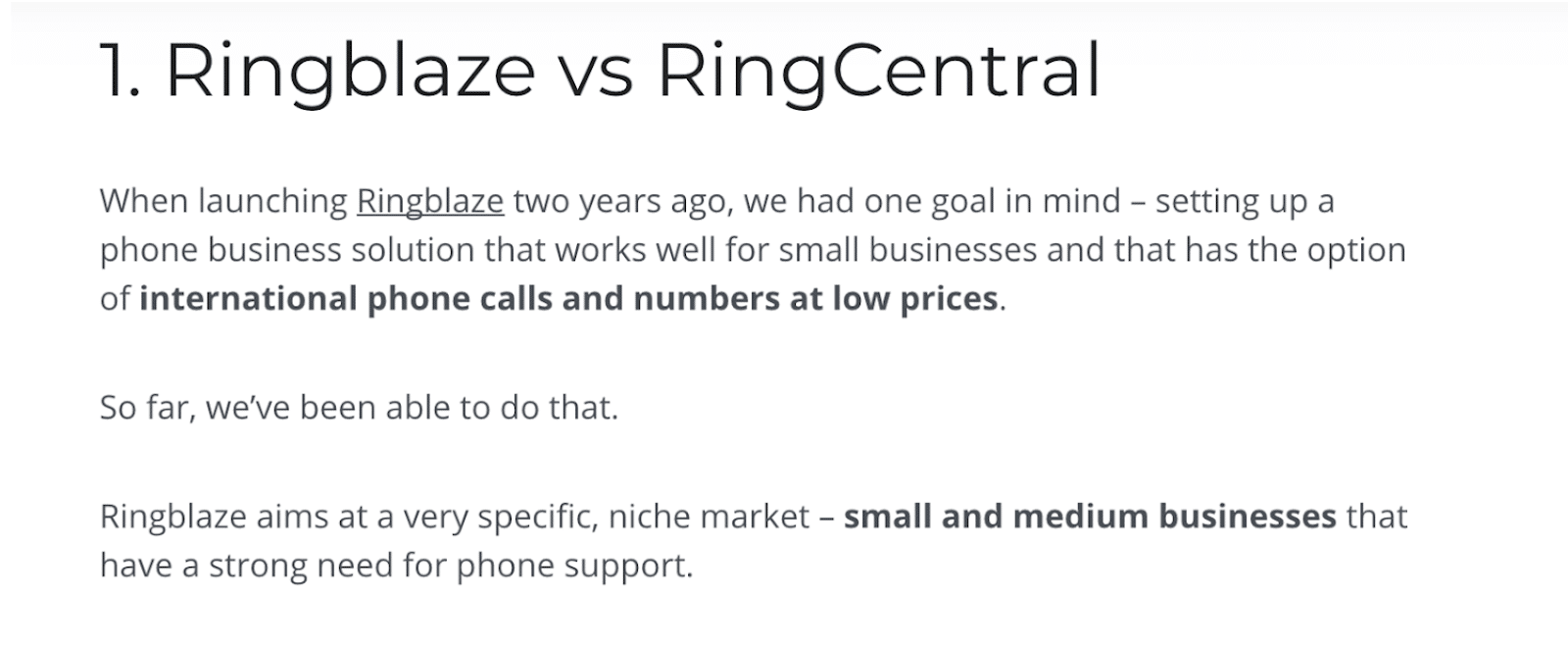
If you’re a new SaaS brand, unfortunately, people probably aren’t googling your SaaS product yet. But you can position your article among search engine results pages for your more famous competitors.
You should write an in-depth and honest review of each tool, comparing their features, pros and cons, who can get the most out of the tool, and so on.
If you manage to write a more detailed guide than the ones that are currently ranking, Google could give you a boost and even use your content for a featured snippet.
The idea isn’t to put your competitors into bad light, but to emphasize the features that make your product a better fit for X audience.
Let’s use the email marketing example again. Here are keywords you can use:
Write a detailed description of each tool and then add a paragraph about your tool showcasing some features that other tools may not have. There are many people that will want to check out this new tool!
Bonus tip: Don’t be afraid of review platforms like G2 or Capterra. Yes, their content may rank as the first result, but it’s often generic and lacks structure. Most people are looking for a more detailed guide than those platforms can offer.
3. How to guides
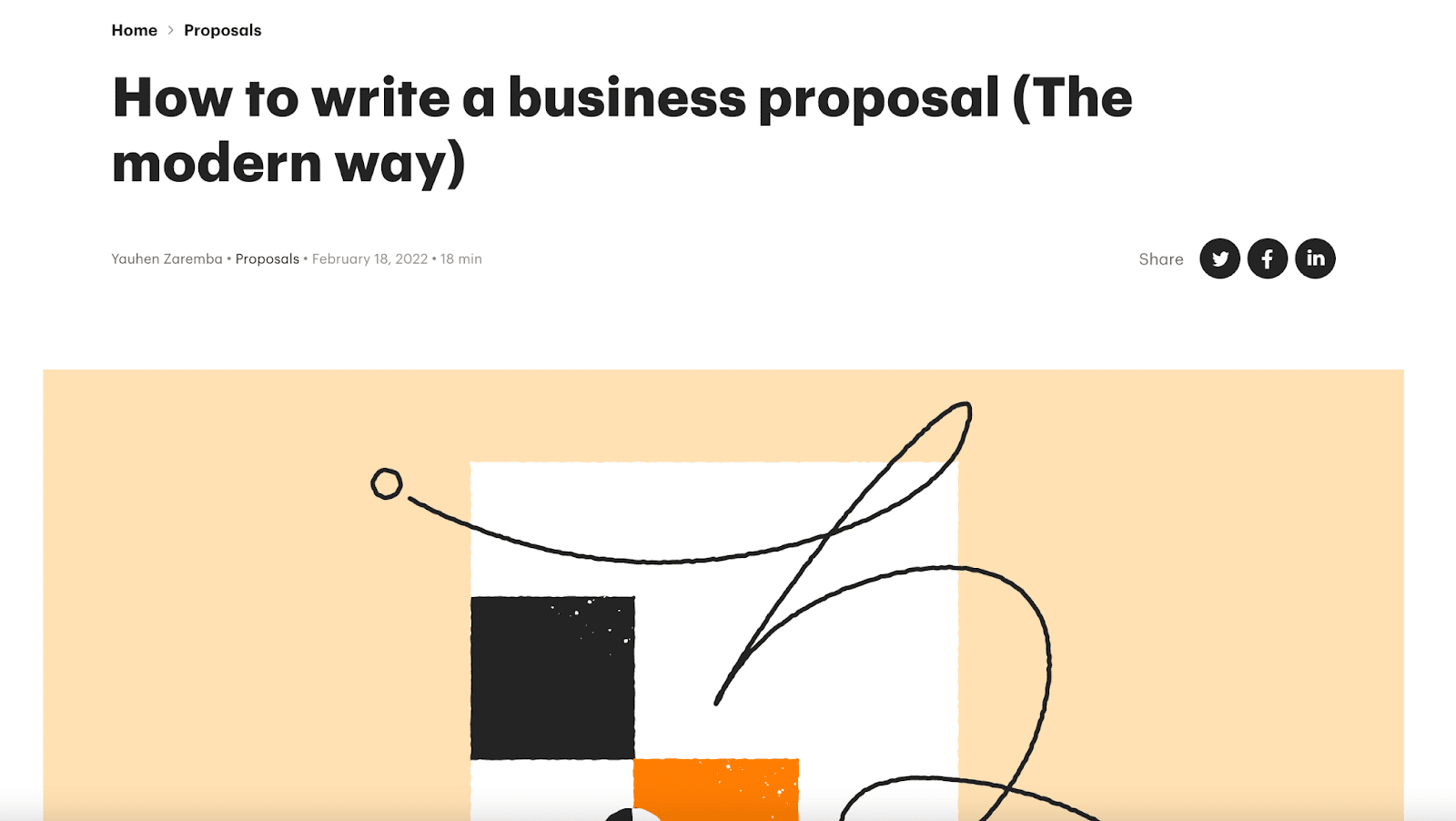
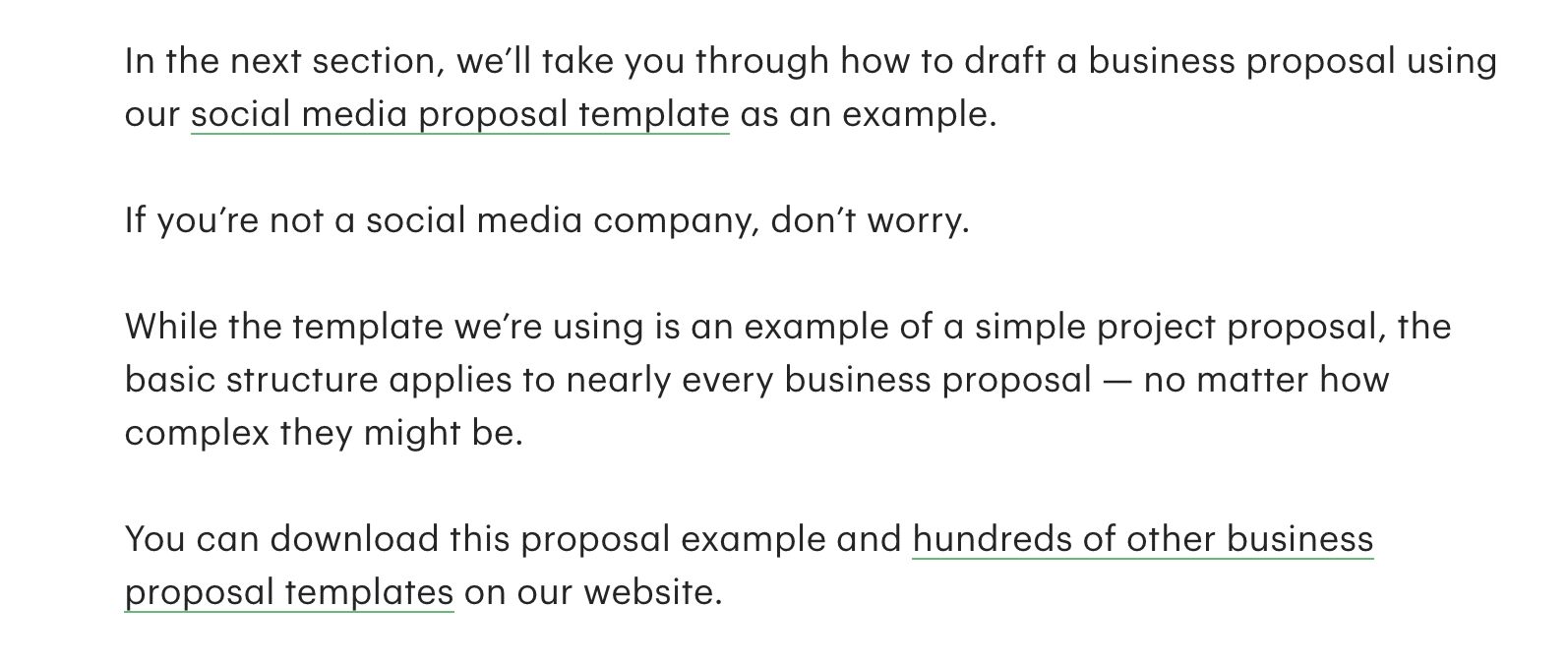
How-to guides are one version of product-led content that is very sought after. The idea is to help readers solve their problems using your product. Check out this article on Pandadoc blog, it teaches you how to write a business proposal while introducing you to the product (business proposal software) and offering to try their ready-to-use templates.
You can create educational content by answering the most common search queries and questions related to the problem you solve. These articles are a mix of creating valuable content for your audience and positioning your SaaS product as the best solution for them.
4. Listicles

And finally, listicles, another highly-requested type of content.
They give you a chance to position your product in the same line as the most famous SaaS brands in your industry.
But don’t get tricked, because it’s not enough to simply rank 10 most popular tools and add a brief description of each software. There are already hundreds of similar articles on Google.
If you want to stand out you have to be willing to put in some work and go in-depth with reviewing each tool.
Your success with listicles will depend on your niche and how saturated it is. For some niches, it’s a waste of time, but in other niches you may discover a blue ocean of possibility.
Sometimes you won’t be able to rank for the most obvious keyword and in that case, try to make it more specific. Yes, search volume might be lower, but the chance for conversion is higher, the more specific you get.
That’s how we helped our client Expandi rank #1 on Google for “top Linkedin automation tools for lead generation” with this listicle.
Here are a few additional B2B blog writing tips:
One of the common mistakes SaaS companies make is starting to create content without a strategy in place. They think they can figure it out along the way, but here’s what actually happens:
However, I know it can be hard to focus on the bigger picture when you have so many things going on on a regular basis, especially if you’re a new SaaS brand or don’t have a huge content marketing team.
That’s why I suggest hiring a SaaS content strategist or a saas content marketer to help you out and give you guidelines you can follow.
Here’s how to choose the right content strategist for your SaaS brand:
Once you have a strategy in place, content creation becomes much easier because you know exactly where you are going and what you have to do. We provide content marketing services for saas companies.
We’ve covered a lot in this article, but if I had to sum it up in three steps to help you increase your content marketing ROI, here’s what I’d do:
I never said content creation is easy, especially in such a competitive industry like SaaS. But I can guarantee all the effort you put in content marketing will pay off multiple times.
If you need help with SaaS content marketing strategy or creating content, book a free call and let’s get you the results you want!
Feel free to reach out to me on Linkedin if you have any questions.
What is a SaaS content marketing strategy?
A SaaS content marketing strategy is a long-term plan for creating content that’s aligned with your goals to attract your target audience and convert them to paying customers. Your content strategy should focus on providing a lot of value and helping your potential customers solve problems related to your niche.
What is B2B SaaS content marketing?
B2B SaaS content marketing consists of creating content with the goal to attract B2B decision-makers and convert them into paying customers. Your content should educate them, help them solve some problems related to their business and showcase your SaaS product as an ideal solution for them.
What are the 5 essential elements of a content marketing strategy?
How to create a SaaS content strategy that drives product?
SaaS marketing agencies know that the most effective SaaS content strategy is focusing on high-intent keywords. Perform keyword research to find queries with high purchasing intent and then create content based on those keywords.
Let us know what you are looking to accomplish.
We’ll give you a clear direction of how to get there.
All consultations are free 🔥
